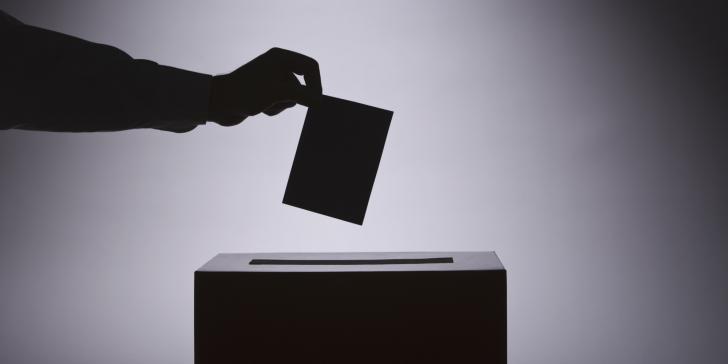U.S. Voting and Elections

International students studying in the United States might notice many Americans wearing a sticker over the next few months.
It's Election Time in the U.S. All American citizens at least 18 years old who have met voting requirements in their respective states (such as registering to vote) have the opportunity to vote for government officials at federal (national), state, and local levels. The sticker signifies that a person has voted. Because voting for government officials is considered a civic duty, many people wear these stickers proudly to remind others to vote if they have not already done so.
General election days, which occur every two years, differ slightly based on which offices are being elected. This year's election is significant in that it includes a presidential election.
Federal (National) Offices
Federal, or national, offices in the U.S. consist of the president and vice president as well as the Congress. The Congress is made up of two chambers - the Senate and the House of Representatives.
Presidential Elections
Presidential elections occur every four years. When a president is elected to office, he/she serves a four-year term. Each president can run for one additional four-year term.
The president and vice president (who run for office together; each presidential candidate selects a vice-presidential candidate) are not chosen by a direct popular vote. That is, election officials do not simply count the number of votes for a candidate and declare the one with the highest number the winner. Instead, the president and vice president are elected by a process called the Electoral College.
When the writers of the U.S. Constitution couldn't agree between allowing the people of the U.S. elect the president or giving that right solely to members of Congress, the Electoral College process was designed as a compromise.
When individuals are voting for president, they are actually voting for a set of electors who have pledged to vote for that candidate on behalf of their state. Each state receives as many electors as the number of congressmen/congresswomen serving their state. Each state has two senators; the number of representatives in the House of Representatives depends on the state's population. Therefore, the number of electors varies from three to 55. (You can view a complete list here.)
It is rare for a candidate to receive the majority of the popular vote but not receive enough electoral votes to win. (270 Electoral College votes are needed to win.) The last time this happened was in 2000.
Congressional Elections
Elections for the U.S. Senate and the House of Representatives occur every two years. Those that fall between presidential elections are called Midterm elections.
Senate
The U.S. Senate is made up of 100 senators, two for every state. Every two years, one-third of the Senate seats are up for election. The seats up for election rotate each election year (or, every two years).
Senators are elected by popular vote in the states they represent and serve six-year terms.
House of Representatives
The U.S. is divided into 435 districts, and those elected to the House of Representatives serve their districts. They are elected by a popular vote in their districts and serve two-year terms.
The non-voting delegates to the House of Representatives for the U.S. territories of American Samoa, District of Columbia (Washington, D.C.), Guam, the Northern Mariana Islands, Puerto Rico, and the United States Virgin Islands are also voted into office.
State Offices
Today's election is not only about voting for President of the United States, nor does it end with the election of member of Congress. Officials of state government are elected by the people as well.
State-level elections vary, as each state has its own state constitution and individual system of state government. Aside from electing a governor, lieutenant governor, and state legislators (e.g., state senators, state houses of representatives), states can hold elections for offices such as the Attorney General, Secretary of State, and state supreme courts. Proposed amendments to state constitutions are also voted on in a general election.
Local Offices
Elections for local offices vary widely. Examples of local offices found on a general election ballot may include mayor, sheriff, school board members, and city council members. Referendums proposed by a school board or city council are often voted on during a general election as well.